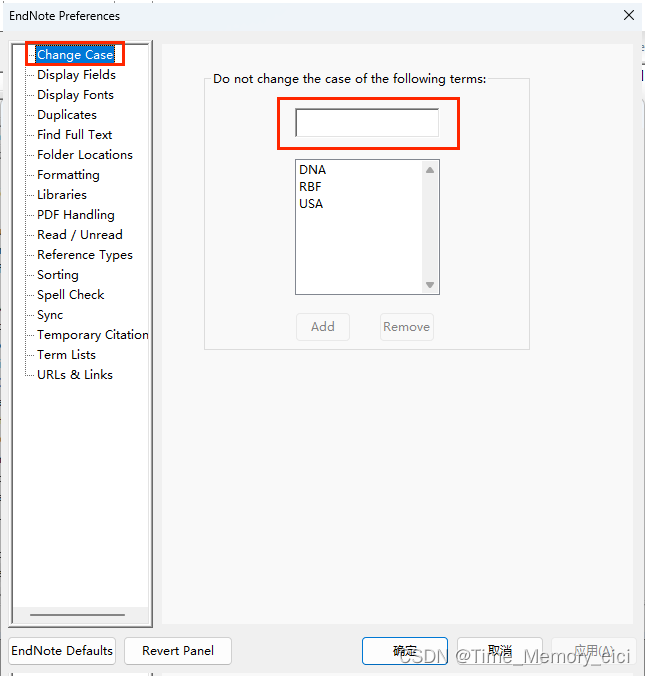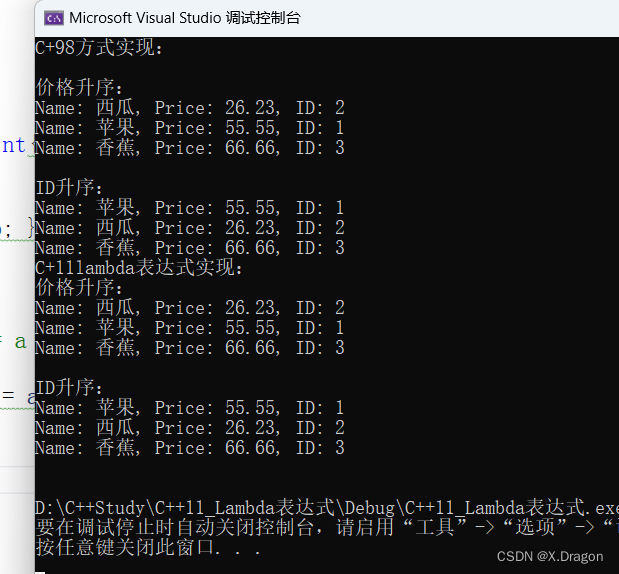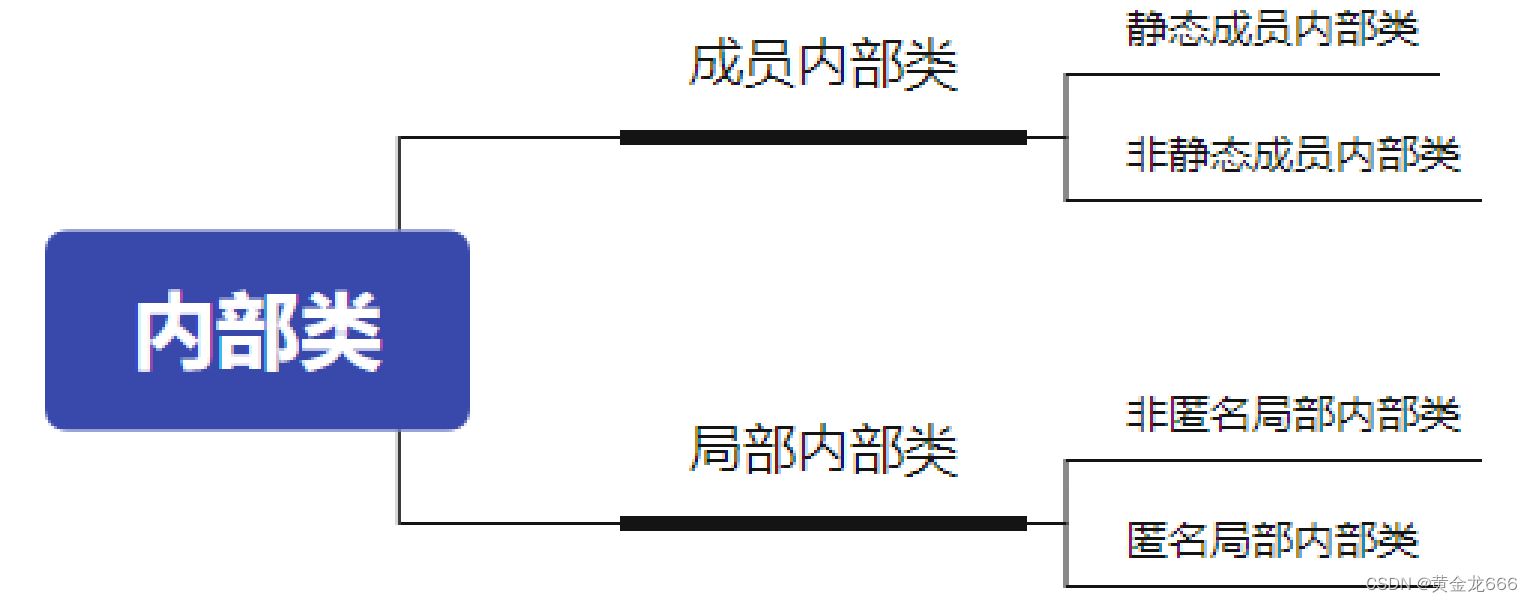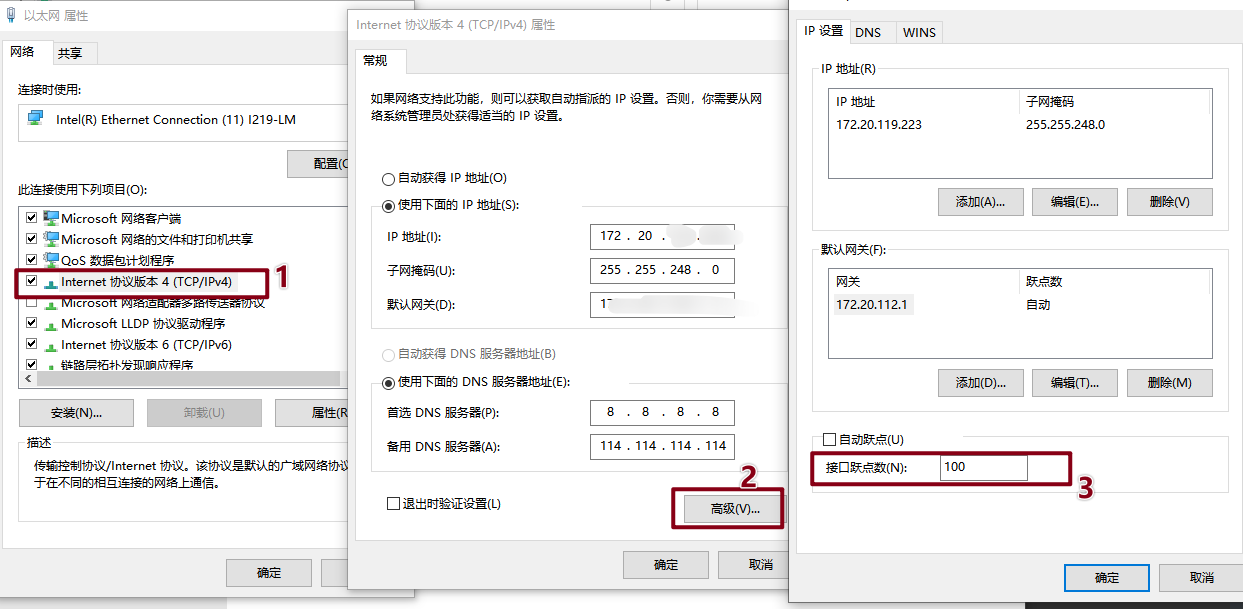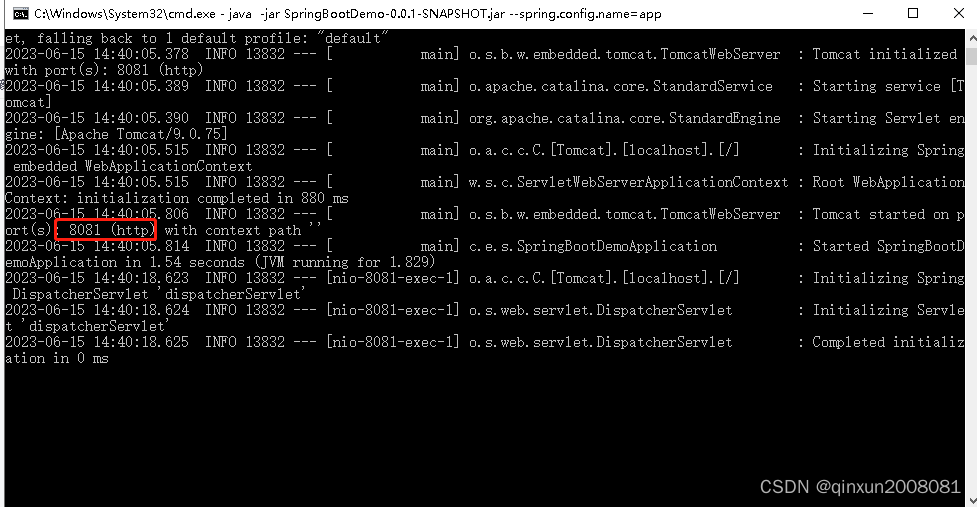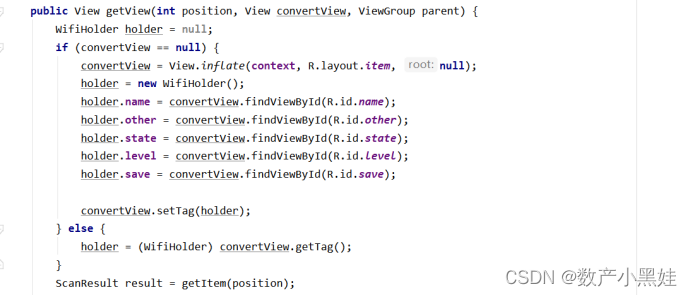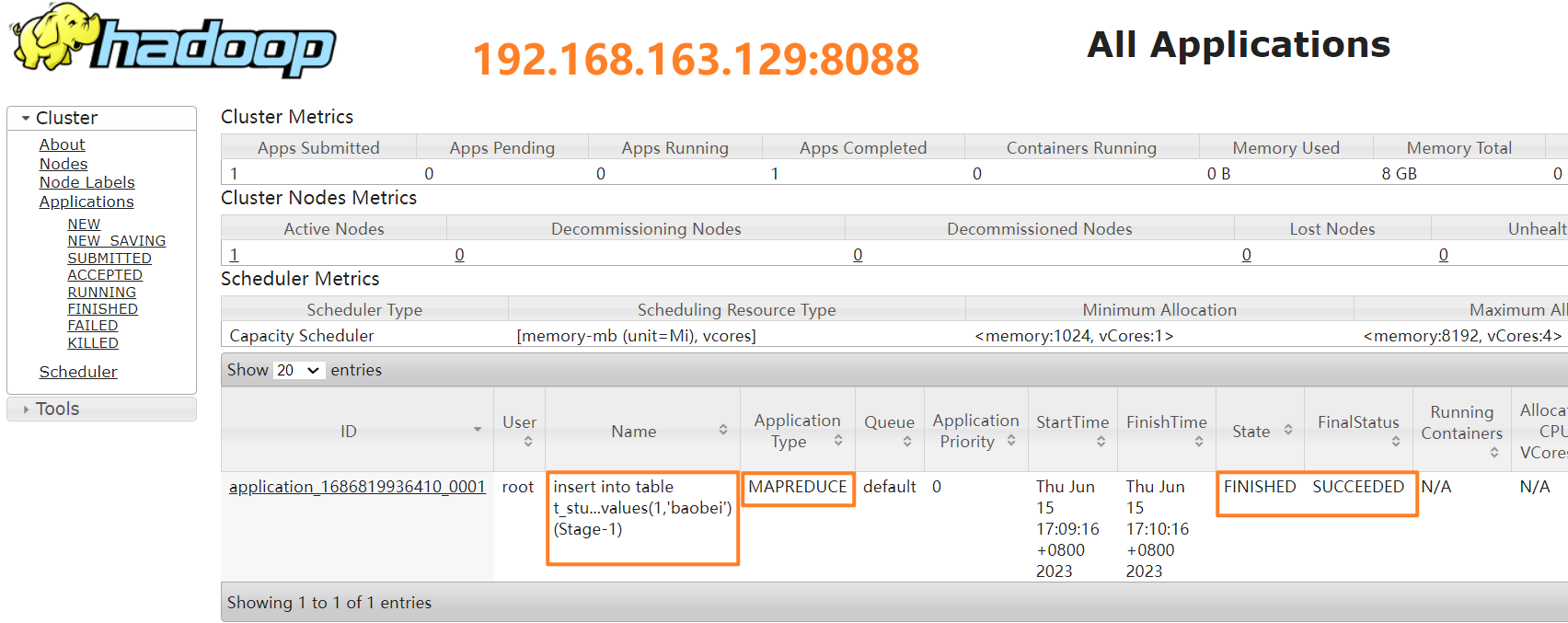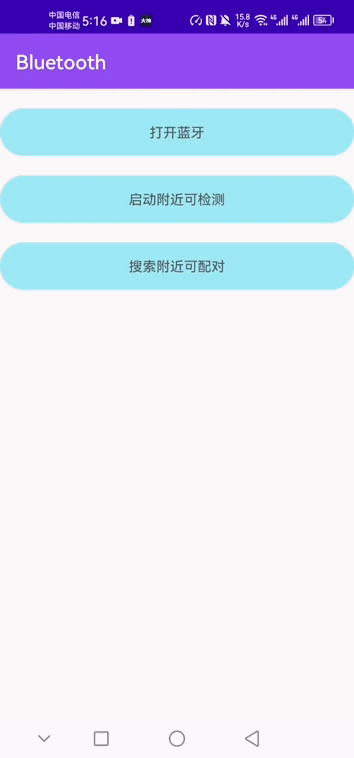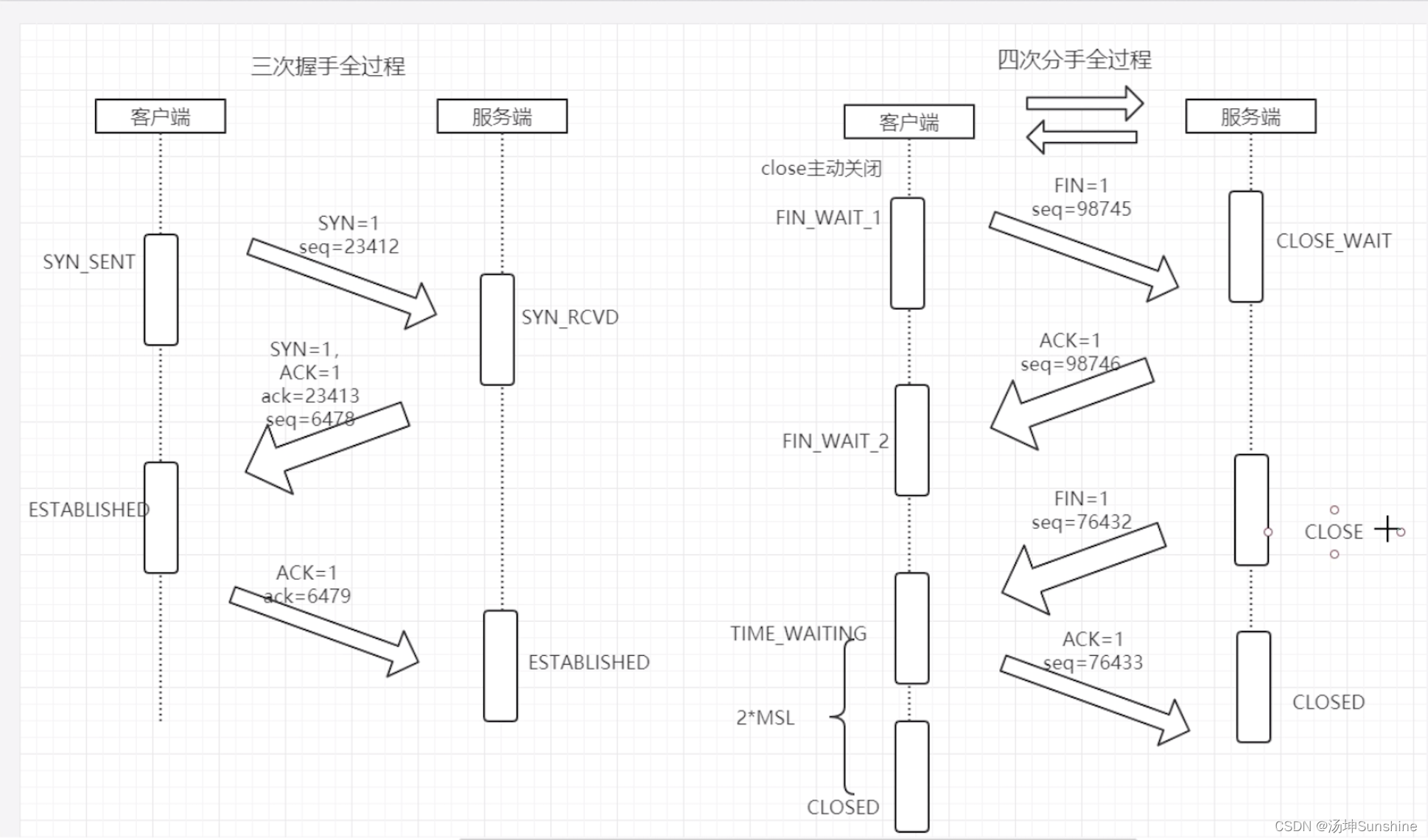目录
- 一、MyBatis的缓存
- 1.1 MyBatis的一级缓存
- 1.2 MyBatis的二级缓存
- 1.3 二级缓存的相关配置
- 1.4 MyBatis缓存查询的顺序
- 1.5 整合第三方缓存EHCache(了解)
- 二、MyBatis的逆向工程
- 2.1 创建逆向工程的步骤
- 2.2 简单使用
- 查询
- 增改
- 三、 分页插件
- 3.1 分页插件使用步骤
- 3.2 分页插件的使用
一、MyBatis的缓存
1.1 MyBatis的一级缓存
- 一级缓存是SqlSession级别的,通过同一个SqlSession查询的数据会被缓存,下次查询相同的数据,就会从缓存中直接获取,不会从数据库重新访问
- 使一级缓存失效的四种情况:
- 不同的SqlSession对应不同的一级缓存
- 同一个SqlSession但是查询条件不同
- 同一个SqlSession两次查询期间执行了任何一次增删改操作
- 同一个SqlSession两次查询期间手动清空了缓存
1.2 MyBatis的二级缓存
- 二级缓存是SqlSessionFactory级别,通过同一个SqlSessionFactory创建的SqlSession查询的结果会被缓存;此后若再次执行相同的查询语句,结果就会从缓存中获取
- 二级缓存开启的条件
- 在核心配置文件中,设置全局配置属性cacheEnabled=“true”,默认为true,不需要设置
- 在映射文件中设置标签
<cache type=""/> - 二级缓存必须在SqlSession关闭或提交之后有效
- 查询的数据所转换的实体类类型必须实现序列化的接口
- 使二级缓存失效的情况:两次查询之间执行了任意的增删改,会使一级和二级缓存同时失效
1.3 二级缓存的相关配置
- 在mapper配置文件中添加的cache标签可以设置一些属性
- eviction属性:缓存回收策略
- LRU(Least Recently Used) – 最近最少使用的:移除最长时间不被使用的对象。
- FIFO(First in First out) – 先进先出:按对象进入缓存的顺序来移除它们。
- SOFT – 软引用:移除基于垃圾回收器状态和软引用规则的对象。
- WEAK – 弱引用:更积极地移除基于垃圾收集器状态和弱引用规则的对象。
- 默认的是 LRU
- flushInterval属性:刷新间隔,单位毫秒
- 默认情况是不设置,也就是没有刷新间隔,缓存仅仅调用语句(增删改)时刷新
- size属性:引用数目,正整数
- 代表缓存最多可以存储多少个对象,太大容易导致内存溢出
- readOnly属性:只读,true/false
- true:只读缓存;会给所有调用者返回缓存对象的相同实例。因此这些对象不能被修改。这提供了很重要的性能优势。
- false:读写缓存;会返回缓存对象的拷贝(通过序列化)。这会慢一些,但是安全,因此默认是false
1.4 MyBatis缓存查询的顺序
- 先查询二级缓存,因为二级缓存中可能会有其他程序已经查出来的数据,可以拿来直接使用
- 如果二级缓存没有命中,再查询一级缓存
- 如果一级缓存也没有命中,则查询数据库
- SqlSession关闭之后,一级缓存中的数据会写入二级缓存
1.5 整合第三方缓存EHCache(了解)
EHCache是一个java的缓存框架,在mybatis中自带的有缓存功能,但是在开发中我们会使用更加专业的第三方框架来代替自带的缓存功能。
- 添加依赖
<!-- Mybatis EHCache整合包 -->
<dependency>
<groupId>org.mybatis.caches</groupId>
<artifactId>mybatis-ehcache</artifactId>
<version>1.2.1</version>
</dependency>
- 创建EHCache的配置文件ehcache.xml
- 名字必须叫ehcache.xml
<?xml version="1.0" encoding="utf-8" ?>
<ehcache xmlns:xsi="http://www.w3.org/2001/XMLSchema-instance"
xsi:noNamespaceSchemaLocation="../config/ehcache.xsd">
<!-- 磁盘保存路径 -->
<diskStore path="D:\ehcache"/>
<defaultCache
maxElementsInMemory="1000"
maxElementsOnDisk="10000000"
eternal="false"
overflowToDisk="true"
timeToIdleSeconds="120"
timeToLiveSeconds="120"
diskExpiryThreadIntervalSeconds="120"
memoryStoreEvictionPolicy="LRU">
</defaultCache>
</ehcache>
- 设置二级缓存的类型
在xxxMapper.xml文件中设置二级缓存类型
<cache type="org.mybatis.caches.ehcache.EhcacheCache"/>
- HCache配置文件说明
| 属性名 | 是否必须 | 作用 |
|---|---|---|
| maxElementsInMemory | 是 | 在内存中缓存的element的最大数目 |
| maxElementsOnDisk | 是 | 在磁盘上缓存的element的最大数目,若是0表示无穷大 |
| eternal | 是 | 设定缓存的elements是否永远不过期。 如果为true,则缓存的数据始终有效, 如果为false那么还要根据timeToIdleSeconds、timeToLiveSeconds判断 |
| overflowToDisk | 是 | 设定当内存缓存溢出的时候是否将过期的element缓存到磁盘上 |
| timeToIdleSeconds | 否 | 当缓存在EhCache中的数据前后两次访问的时间超过timeToIdleSeconds的属性取值时, 这些数据便会删除,默认值是0,也就是可闲置时间无穷大 |
| timeToLiveSeconds | 否 | 缓存element的有效生命期,默认是0.,也就是element存活时间无穷大 |
| diskSpoolBufferSizeMB | 否 | DiskStore(磁盘缓存)的缓存区大小。默认是30MB。每个Cache都应该有自己的一个缓冲区 |
| diskPersistent | 否 | 在VM重启的时候是否启用磁盘保存EhCache中的数据,默认是false |
| diskExpiryThreadIntervalSeconds | 否 | 磁盘缓存的清理线程运行间隔,默认是120秒。每个120s, 相应的线程会进行一次EhCache中数据的清理工作 |
| memoryStoreEvictionPolicy | 否 | 当内存缓存达到最大,有新的element加入的时候, 移除缓存中element的策略。 默认是LRU(最近最少使用),可选的有LFU(最不常使用)和FIFO(先进先出 |
二、MyBatis的逆向工程
- 正向工程:先创建Java实体类,由框架负责根据实体类生成数据库表。Hibernate是支持正向工程的
- 逆向工程:先创建数据库表,由框架负责根据数据库表,反向生成如下资源:
- Java实体类
- Mapper接口
- Mapper映射文件
2.1 创建逆向工程的步骤
- 添加依赖和插件
<dependencies>
<!-- MyBatis核心依赖包 -->
<dependency>
<groupId>org.mybatis</groupId>
<artifactId>mybatis</artifactId>
<version>3.5.9</version>
</dependency>
<!-- junit测试 -->
<dependency>
<groupId>junit</groupId>
<artifactId>junit</artifactId>
<version>4.13.2</version>
<scope>test</scope>
</dependency>
<!-- MySQL驱动 -->
<dependency>
<groupId>mysql</groupId>
<artifactId>mysql-connector-java</artifactId>
<version>8.0.27</version>
</dependency>
<!-- log4j日志 -->
<dependency>
<groupId>log4j</groupId>
<artifactId>log4j</artifactId>
<version>1.2.17</version>
</dependency>
</dependencies>
<!-- 控制Maven在构建过程中相关配置 -->
<build>
<!-- 构建过程中用到的插件 -->
<plugins>
<!-- 具体插件,逆向工程的操作是以构建过程中插件形式出现的 -->
<plugin>
<groupId>org.mybatis.generator</groupId>
<artifactId>mybatis-generator-maven-plugin</artifactId>
<version>1.3.0</version>
<!-- 插件的依赖 -->
<dependencies>
<!-- 逆向工程的核心依赖 -->
<dependency>
<groupId>org.mybatis.generator</groupId>
<artifactId>mybatis-generator-core</artifactId>
<version>1.3.2</version>
</dependency>
<!-- 数据库连接池 -->
<dependency>
<groupId>com.mchange</groupId>
<artifactId>c3p0</artifactId>
<version>0.9.2</version>
</dependency>
<!-- MySQL驱动 -->
<dependency>
<groupId>mysql</groupId>
<artifactId>mysql-connector-java</artifactId>
<version>8.0.27</version>
</dependency>
</dependencies>
</plugin>
</plugins>
</build>
- 创建MyBatis的核心配置文件
<?xml version="1.0" encoding="UTF-8" ?>
<!DOCTYPE configuration
PUBLIC "-//mybatis.org//DTD Config 3.0//EN"
"http://mybatis.org/dtd/mybatis-3-config.dtd">
<configuration>
<properties resource="jdbc.properties"/>
<typeAliases>
<package name=""/>
</typeAliases>
<environments default="development">
<environment id="development">
<transactionManager type="JDBC"/>
<dataSource type="POOLED">
<property name="driver" value="${jdbc.driver}"/>
<property name="url" value="${jdbc.url}"/>
<property name="username" value="${jdbc.username}"/>
<property name="password" value="${jdbc.password}"/>
</dataSource>
</environment>
</environments>
<mappers>
<package name=""/>
</mappers>
</configuration>
- 创建逆向工程的配置文件
文件名必须是:generatorConfig.xml
<?xml version="1.0" encoding="UTF-8"?>
<!DOCTYPE generatorConfiguration
PUBLIC "-//mybatis.org//DTD MyBatis Generator Configuration 1.0//EN"
"http://mybatis.org/dtd/mybatis-generator-config_1_0.dtd">
<generatorConfiguration>
<!--
targetRuntime: 执行生成的逆向工程的版本
MyBatis3Simple: 生成基本的CRUD(清新简洁版)
MyBatis3: 生成带条件的CRUD(奢华尊享版)
-->
<context id="DB2Tables" targetRuntime="MyBatis3Simple">
<!-- 数据库的连接信息 -->
<jdbcConnection driverClass="com.mysql.cj.jdbc.Driver"
connectionURL="jdbc:mysql://localhost:3306/mybatis"
userId="root"
password="123456">
</jdbcConnection>
<!-- javaBean的生成策略-->
<javaModelGenerator targetPackage="com.mybatis.pojo" targetProject=".\src\main\java">
<property name="enableSubPackages" value="true" />
<property name="trimStrings" value="true" />
</javaModelGenerator>
<!-- SQL映射文件的生成策略 -->
<sqlMapGenerator targetPackage="com.mybatis.mapper"
targetProject=".\src\main\resources">
<property name="enableSubPackages" value="true" />
</sqlMapGenerator>
<!-- Mapper接口的生成策略 -->
<javaClientGenerator type="XMLMAPPER"
targetPackage="com.mybatis.mapper" targetProject=".\src\main\java">
<property name="enableSubPackages" value="true" />
</javaClientGenerator>
<!-- 逆向分析的表 -->
<!-- tableName设置为*号,可以对应所有表,此时不写domainObjectName -->
<!-- domainObjectName属性指定生成出来的实体类的类名 -->
<table tableName="t_emp" domainObjectName="Emp"/>
<table tableName="t_dept" domainObjectName="Dept"/>
</context>
</generatorConfiguration>
- 执行MBG插件的generate

2.2 简单使用
查询
- selectByExample:按条件查询,需要传入一个example对象或者null;如果传入一个null,则表示没有条件,也就是查询所有数据
- example.createCriteria().xxx:创建条件对象,通过andXXX方法为SQL添加查询添加,每个条件之间是and关系
- example.or().xxx:将之前添加的条件通过or拼接其他条件
@Test public void testMBG() throws IOException {
InputStream is = Resources.getResourceAsStream("mybatis-config.xml");
SqlSessionFactoryBuilder sqlSessionFactoryBuilder = new SqlSessionFactoryBuilder();
SqlSessionFactory sqlSessionFactory = sqlSessionFactoryBuilder.build(is);
SqlSession sqlSession = sqlSessionFactory.openSession(true);
EmpMapper mapper = sqlSession.getMapper(EmpMapper.class);
EmpExample example = new EmpExample();
//名字为张三,且年龄大于等于20
example.createCriteria().andEmpNameEqualTo("张三").andAgeGreaterThanOrEqualTo(20);
//或者did不为空
example.or().andDidIsNotNull();
List<Emp> emps = mapper.selectByExample(example);
emps.forEach(System.out::println);
}
增改
updateByPrimaryKey:通过主键进行数据修改,如果某一个值为null,也会将对应的字段改为null
- mapper.updateByPrimaryKey(new Emp(1,“admin”,22,null,“456@qq.com”,3));
updateByPrimaryKeySelective():通过主键进行选择性数据修改,如果某个值为null,则不修改这个字段
- mapper.updateByPrimaryKeySelective(new Emp(2,“admin2”,22,null,“456@qq.com”,3));
三、 分页插件
3.1 分页插件使用步骤
- 添加依赖
<!-- https://mvnrepository.com/artifact/com.github.pagehelper/pagehelper -->
<dependency>
<groupId>com.github.pagehelper</groupId>
<artifactId>pagehelper</artifactId>
<version>5.2.0</version>
</dependency>
- 配置分页插件
<?xml version="1.0" encoding="UTF-8" ?>
<!DOCTYPE configuration
PUBLIC "-//mybatis.org//DTD Config 3.0//EN"
"http://mybatis.org/dtd/mybatis-3-config.dtd">
<configuration>
<properties resource="jdbc.properties"/>
<settings>
<!--将表中字段的下划线自动转换为驼峰-->
<setting name="mapUnderscoreToCamelCase" value="true"/>
<!--开启延迟加载-->
<setting name="lazyLoadingEnabled" value="true"/>
</settings>
<typeAliases>
<package name="com.lx.pojo"/>
</typeAliases>
<plugins>
<!--设置分页插件-->
<plugin interceptor="com.github.pagehelper.PageInterceptor"></plugin>
</plugins>
<environments default="development">
<environment id="development">
<transactionManager type="JDBC"/>
<dataSource type="POOLED">
<property name="driver" value="${jdbc.driver}"/>
<property name="url" value="${jdbc.url}"/>
<property name="username" value="${jdbc.username}"/>
<property name="password" value="${jdbc.password}"/>
</dataSource>
</environment>
</environments>
<!--引入映射文件-->
<mappers>
<package name="com.lx.mapper"/>
</mappers>
</configuration>
3.2 分页插件的使用
- 开启分页功能
在查询功能之前使用PageHelper.startPage(int pageNum, int pageSize)开启分页功能- pageNum:当前页的页码
- pageSize:每页显示的条数
@Test
public void testPageHelper() throws IOException {
InputStream is = Resources.getResourceAsStream("mybatis-config.xml");
SqlSessionFactoryBuilder sqlSessionFactoryBuilder = new SqlSessionFactoryBuilder();
SqlSessionFactory sqlSessionFactory = sqlSessionFactoryBuilder.build(is);
SqlSession sqlSession = sqlSessionFactory.openSession(true);
EmpMapper mapper = sqlSession.getMapper(EmpMapper.class);
//访问第一页,每页四条数据
PageHelper.startPage(1,4);
List<Emp> emps = mapper.selectByExample(null);
emps.forEach(System.out::println);
}
- 分页相关数据
方法一:直接输出
@Test
public void testPageHelper() throws IOException {
InputStream is = Resources.getResourceAsStream("mybatis-config.xml");
SqlSessionFactoryBuilder sqlSessionFactoryBuilder = new SqlSessionFactoryBuilder();
SqlSessionFactory sqlSessionFactory = sqlSessionFactoryBuilder.build(is);
SqlSession sqlSession = sqlSessionFactory.openSession(true);
EmpMapper mapper = sqlSession.getMapper(EmpMapper.class);
//访问第一页,每页四条数据
Page<Object> page = PageHelper.startPage(1, 4);
List<Emp> emps = mapper.selectByExample(null);
//在查询到List集合后,打印分页数据
System.out.println(page);
}
输出:
Page{count=true, pageNum=1, pageSize=4, startRow=0, endRow=4, total=8, pages=2, reasonable=false, pageSizeZero=false}[Emp{eid=1, empName=‘admin’, age=22, sex=‘男’, email=‘456@qq.com’, did=3}, Emp{eid=2, empName=‘admin2’, age=22, sex=‘男’, email=‘456@qq.com’, did=3}, Emp{eid=3, empName=‘王五’, age=12, sex=‘女’, email=‘123@qq.com’, did=3}, Emp{eid=4, empName=‘赵六’, age=32, sex=‘男’, email=‘123@qq.com’, did=1}]
方法二:使用PageInfo
在查询获取list集合之后,使用PageInfo pageInfo = new PageInfo<>(List list, int navigatePages)获取分页相关数据
- list:分页之后的数据
- navigatePages:导航分页的页码数
@Test
public void testPageHelper() throws IOException {
InputStream is = Resources.getResourceAsStream("mybatis-config.xml");
SqlSessionFactoryBuilder sqlSessionFactoryBuilder = new SqlSessionFactoryBuilder();
SqlSessionFactory sqlSessionFactory = sqlSessionFactoryBuilder.build(is);
SqlSession sqlSession = sqlSessionFactory.openSession(true);
EmpMapper mapper = sqlSession.getMapper(EmpMapper.class);
PageHelper.startPage(1, 4);
List<Emp> emps = mapper.selectByExample(null);
PageInfo<Emp> page = new PageInfo<>(emps,5);
System.out.println(page);
}
输出:
PageInfo{
pageNum=1, pageSize=4, size=4, startRow=1, endRow=4, total=8, pages=2,
list=Page{count=true, pageNum=1, pageSize=4, startRow=0, endRow=4, total=8, pages=2, reasonable=false, pageSizeZero=false}[Emp{eid=1, empName='admin', age=22, sex='男', email='456@qq.com', did=3}, Emp{eid=2, empName='admin2', age=22, sex='男', email='456@qq.com', did=3}, Emp{eid=3, empName='王五', age=12, sex='女', email='123@qq.com', did=3}, Emp{eid=4, empName='赵六', age=32, sex='男', email='123@qq.com', did=1}],
prePage=0, nextPage=2, isFirstPage=true, isLastPage=false, hasPreviousPage=false, hasNextPage=true, navigatePages=5, navigateFirstPage=1, navigateLastPage=2, navigatepageNums=[1, 2]}
其中list中的数据等同于方法一中直接输出的page数据
常用数据:
- pageNum:当前页的页码
- pageSize:每页显示的条数
- size:当前页显示的真实条数
- total:总记录数
- pages:总页数
- prePage:上一页的页码
- nextPage:下一页的页码
- isFirstPage/isLastPage:是否为第一页/最后一页
- hasPreviousPage/hasNextPage:是否存在上一页/下一页
- navigatePages:导航分页的页码数
- navigatepageNums:导航分页的页码,[1,2,3,4,5]
